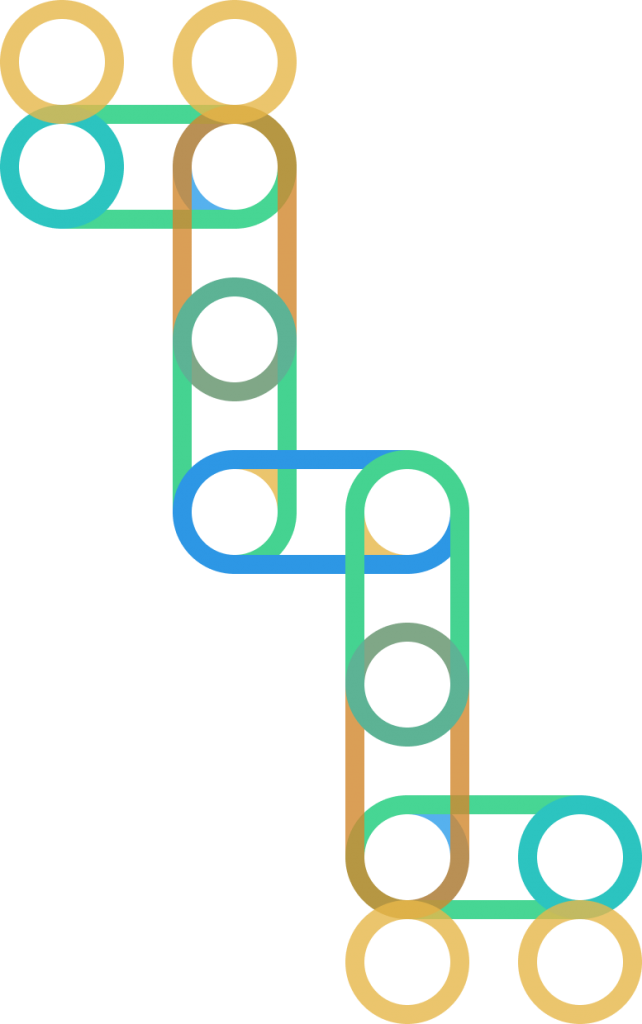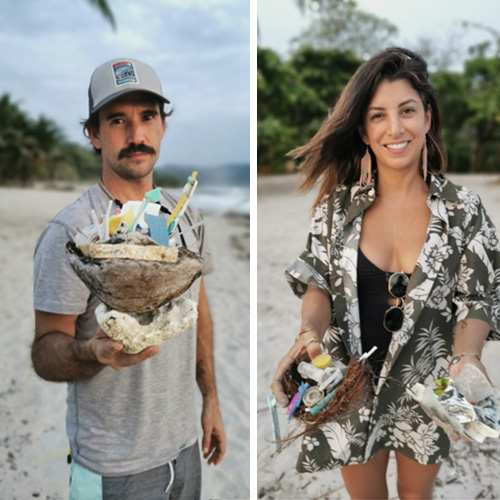
The packaging innovations that promise to reduce the industry’s contribution to global warming and clean up the planet.

Responsible for more than 40% of annual plastic production, packaging companies new and old are seeking to reduce their greenhouse emissions and their reliance on single use plastics by adopting new approaches and technologies. Fortunately there are a host of great ideas coming on stream that offer optimism for the future. Here’s just a few.
1. Bioplastics
Bioplastics still represent a very small percentage (less than 1%) of global plastic production, but it’s generating a large amount of excitement as the packaging industry bids to reduce its carbon footprint and present a greener face to consumers. Responsible for 40% of the 367m tonnes of plastic produced in 2021, the packaging industry is searching for “natural” alternatives to fossil fuel feedstocks and global bioplastics production capacities are set to increase from around 2.42 million tonnes in 2021 to approximately 7.59 million tonnes in 2026. Almost half of this amount is likely to be used in packaging. Consumer goods companies working alongside their packaging and polymer producing partners have created bioplastics from sugar cane, potatoes, wood and bamboo among other things.
Companies making waves this space:
Key challenges for companies in this space involve staying clear of competing for feedstocks and land already being used to feed the planet’s fast-growing population and concerns about contaminating existing recycling systems built for polymers made from fossil fuels.
Virent // The company’s BioForming technology features catalytic chemistry that converts a range of plant-based sugars into a full range of hydrocarbon products identical to those made from petroleum. The “drop-in” solution enables full utilization of today’s existing processing, pipeline, storage and transportation infrastructure and is being used to make the bio-paraxylene used by The Coca-Cola Company in its Plant Bottle, which is made from 100% renewable biomaterials like corn starch.
Avantium // Its principal bioplastic alternative PEF, is a plant-based, recyclable and degradable plastic material that has great potential for use in the packaging, textiles and film sectors.
2. Home Compostable, Edible & Dissolvable Packaging.
The most troublesome plastics are not PET bottles or other more frequently recycled packaging options like the HDPE polymers used in milk cartons. In most places in the world these valuable materials with well established collection systems, have recycle rates on a par with paper and aluminum. The most troublesome packaging solutions are those of little value like films and polystyrene bags which are almost impossible to recycle. It is estimated that we use over 300 billion polybags and single-use, resealable sandwich and storage bags (SRPBs) every year. Ending the build up of sachets and other less valuable single-use plastics from flowing into our waste streams is one of the big challenges being addressed by designer Tom Ford who founded the Plastic Innovation Prize in 2020. The most promising area in this field has been the rise of carbon capturing kelp as an alternative to plastic. Kelp and seaweed has been converted into dissolvable and even edible plastic bags and food sachets by a host of startups racing to come up with a scalable alternative to the most troublesome of plastic packaging.
Companies making waves in this space:
It’s a crowded space with venture capitalists betting on R&D teams battling to get their ideas to work at scale. The biggest challenge is not securing funding, or finding a market for the products but sourcing sufficient quantities of the materials required to replace relatively cheap and readily available fossil fuels.
Sway // Offering seaweed-based, home-compostable replacements for thin-film plastic packaging, the US-based startup is aiming to offer a carbon-negative material at scale.
Notpla // Making edible and biodegradable packaging from seaweed, the UK-based startup specialist promises to “make packaging disappear”.
Zerocircle // The Indian startup’s drag and drop technology helps respond to local needs for film plastics sourcing products from seaweed that decomposes and leaves nothing but compost behind.
Sustainabl // Hong Kong-based startup creating home compostable, biodegradable, toxin and preservative-free products from “bagasse” pulp, a byproduct of the sugarcane industry.
3. Plastic Made from Carbon Dioxide
At first glance, the conversion of the greenhouse gasses – Carbon Dioxide and Carbon Monoxide – into plastic seems like a glorious circular economy innovation worthy of the top prize in Elon Musk’s $100m XPrize Carbon Removal initiative. Solving two problems in one wonderful piece of packaging, plastic made, albeit partially, from CO2 has gained ground in the last two years promising to draw down levels of carbon dioxide in the atmosphere but also to become a long-term replacement for fossil fuels drastically cutting future greenhouse emissions. Companies like Chicago-based LanzaTech are already manufacturing PET bottles with a biological gas fermentation process that creates ethanol from carbon monoxide captured from steel mill emissions.
Like yeast fermenting sugar to make alcohol, LanzaTech uses a microbe – or a biocatalyst – to ferment the wasted carbon. The gasses are captured from the flue stacks at industrial sites and fed to a bioreactor where the fermentation takes place. A dehydration process can then be used to convert ethanol into ethylene, which can be polymerized into all types of plastics.
Companies making waves in this space:
There is plenty of interest around this technology for the beautiful symmetry of its solution although it has still yet to prove if it is commercially viable at scale.
LanzaTech // Is working with L’Oreal to create cosmetic bottles from the material and Swiss consumer goods company, Mibelle Group, to create what it has called the world’s first PET bottle made with carbon captured from the atmosphere. The material accounts for up to 30% of the PET used in bottles produced for Mibelle Group’s Migros brand.
Avantium // Dutch biopolymer pioneer was awarded €1.78 million (US$2.17 million) in EU grants to develop its Volta Technology for producing CO2-based polymers.
Covestro // Using CO2 captured from industrial processes, the German chemicals company is creating foams used in mattresses and materials used in the automotive industry.
4. Digital Watermarks
The proliferation of more and more innovative bioplastics thrown into an already complex collection of fourteen commonly used fossil fuel-based polymers coupled with the infinite variety of uses for plastic has spawned the need for greater visibility on what every piece of packaging is made of and used for – at a glance. One of the main reasons that so much valuable plastic ends up in landfills or contaminates the environment is the level of complexity of sorting through post-consumer waste streams. While PET, the champion of plastics, is the polymer that is most easily identified and most regularly recycled – registering recycling rates of almost 49% for PET bottles in Europe – other polymers are far more complicated to sort and less likely to be recycled as a result. The increase in complexity is being balanced out by the emergence of artificial intelligence and robotic recycling technology that has created an opportunity for industry to deploy invisible barcodes or digital watermarks that can be read by machines to facilitate more efficient sorting of less valuable waste. The technology identified by the Ellen MacArthur Foundation in its Holy Grail 2.0 collaboration with key industry players promises to greatly improve recycling rates and increase feed stocks for chemical and mechanical recycling plants.
Companies making waves in this space:
Digimarc // Digimarc digital watermarks are front and center of an exciting collaboration between, AIM – European Brands Association and the Alliance to End Plastic Waste that united over 130 companies and organizations from the packaging value chain to create the Digital Watermarks Initiative HolyGrail 2.0.
5. RFID/smart chips
Reuse systems have been taken to the next level with the addition of smart technologies like RFID (Radio-frequency identification) chips that enable packaging to talk with reuse systems and feed valuable information to retailers and customers along the supply chain. These simple digital interfaces create opportunities for consumers and companies to improve the reusable experience connecting to customer’s mobile apps to help incentivize reuse through rewards systems and also provide timely reminders or push notifications for returns.
Companies making waves in this space:
Algramo // The winner of one of the Ellen MacArthur Foundation’s innovation prizes, the Chilena startup has won backing from Closed Loop Partners for its innovative reuse solutions. Already popular with detergents, the company has plans to move into the beverage market with RFID-backed technology solutions that incentivize collaboration and brand loyalty all along the value chain. (Listen to the podcast with Algramo’s Brian Bauer).
PragmatIC Semiconductor // PragmatIC Semiconductor, is leading an Innovate UK, Smart Sustainability Plastic Packaging business project that will make reusable plastic packaging systems a reality at scale. The project code-named TRACE (Technology-enabled Reusable Assets for a Circular Economy) will use PragmatIC’s ultra-low cost NFC technology to give reusable containers unique digital identities (UIDs) so that the packages can be efficiently and effectively returned and reused.
MIWA // The MIWA system couples smart chips with durable reusable containers that life cycle analysis have shown can reduce the overall negative environmental impact by up to 71% when compared to disposable packaging.
6. Natural Branding & Laser Printing
Laser printed branding reduces the need for sticky labels on glass or plastic bottles and other rigid plastic packaging as well as the possibility of labeling fruit directly by burning branding in the peel, removing the need for packaging altogether in some cases. The technology can be used to mark organic produce, glass or PET, eliminating the use of hard to recycle films and adhesives in many food packaging solutions. Questions remain about printing speeds but the technology is likely to become more common as the packaging industry invests in greening its image.
Companies making waves in this space:
EcoMark // The German laser branding specialist is focused on natural branding of fruit as well as laser branding of wood, plastic and cardboard.
7. Edible Coatings
Further encouraging the trend for zero packaging on shelves for certain types of fruits and vegetables, Boston-based startup Mori has created a proprietary process that uses salt, water, and heat to extract protein from silk and apply it to food, creating natural protection to slow spoiling and keep food fresher for longer. The technology allows food producers, processors, and retailers to reduce food and packaging waste throughout the supply chain. The company raised $50m in Series B1 financing in March, 2022, highlighting the potential of the technology. Investors Prelude Ventures, The Drawdown Fund, Acre Venture Partners, The Engine, Refactor Capital, Blindspot, Closed Loop Partners, Knollwood Investment Advisory as well as new investors Collaborative Fund and Thia Ventures have backed the project shrugging off any question marks about its ability to scale.
Companies making waves in this space:
Mori // The company partners with food producers, processors and retailers to minimize food waste, maximize supply chain efficiencies, and enable a broader distribution network in a cost-effective manner.
Contact Us:
What do you think of some of these initiatives? Which one is most valuable to the packaging business as it seeks to reduce its reliance on fossil fuels and close the loop on plastic waste?
Join the AdaPETation Network and leave us your comments on this article and others.
Share it
THE HISTORY OF PLASTIC
Throughout the history of plastic, PET has been crucial in keeping food fresh with lightweight and durable packaging solutions that have helped reduce food waste for almost a century. Learn all about the invention of plastic and the important role it has played feeding people and saving the lives of humans and elephants in the adaPETation® timeline of the history of plastic.





